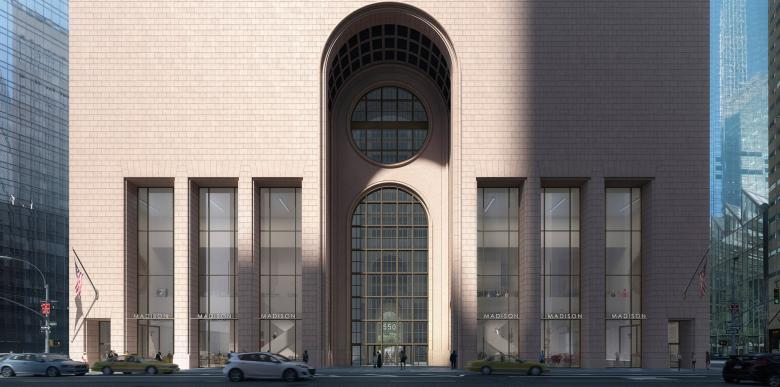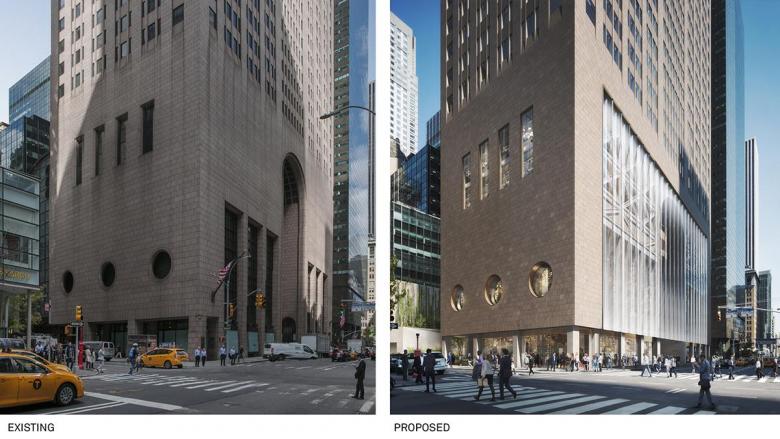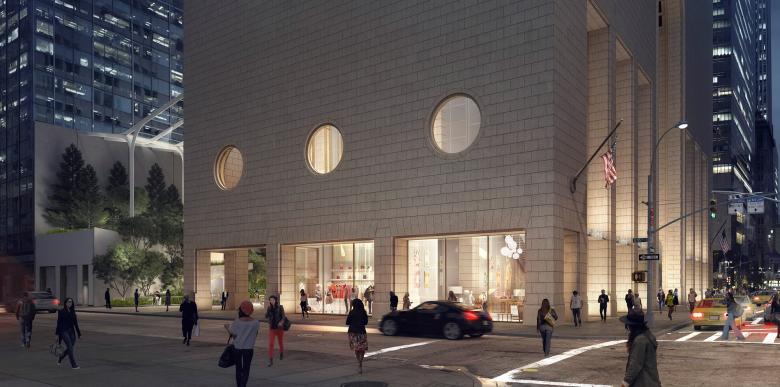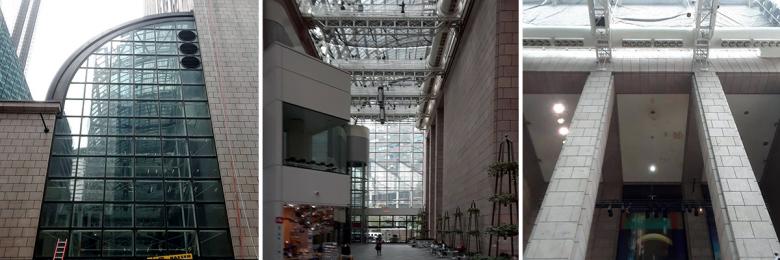AT&T Renovation, Take 2
John Hill
5. dezembro 2018
Renderings courtesy of LMNB and Snøhetta, unless noted otherwise
Snøhetta has unveiled updated renderings for the renovation of 550 Madison Avenue — better known as the AT&T Building, designed by Philip Johnson and John Burgee, and completed in 1984 — following their controversial first design and the Midtown Manhattan tower's designation as a NYC landmark.
Snøhetta unveiled its initial design for the renovation of 550 Madison in October 2017, leading to immediate and vocal calls for preserving Philip Johnson's Postmodern masterpiece. Although the architects at Snøhetta left the skyscraper's distinctive "Chippendale" top alone, they would have stripped away the stone at the base along Madison Avenue and enclosed it in glass to create "an inviting street front."
Unfortunately for Snøhetta and its client, Olayan and Chelsfield — the tower's second owner since Sony, the building's owner and occupant after AT&T, sold it in 2013 — the top and base are strongly wed, so dramatic changes to one affects the whole building. This sort of position was embraced by New York City Landmarks Preservation Commission, which designated the building a NYC landmark in August of this year, describing it "as an icon of the Manhattan skyline and of postmodern architecture."
The landmarking pushed Snøhetta back to the proverbial drawing board and the renderings the firm just released. The sedate, nearly invisible redesign of the facade is clearly geared to appeasing LPC, which will have approval over any changes to the building's exterior (LPC didn't have any say when the first design was made public in October 2017). The website for 550 Madison mentions the "fundamental principles of classical architecture" in Johnson's design and asserts:
Changes to the now-empty building include "new state-of-the-art elevators and HVAC system" serving the tenant floors, a "complete amenity program totaling over 40,000 square feet" in the upper floors of the base, and a "doubling [of] the existing green space." The last transforms the glass-enclosed public space (technically a privately owned public space, or POPS) at the back of the building, opening it up at the ends and capping it with a more elegant glass roof. Although the redesign of the public space is more dramatically different than the facade, this space is a remnant of architect Charles Gwathmey own redesign of the base, from 1993 when Sony bought the building, rather than a Johnson original.Now, the visionary international design firm Snøhetta is building on Johnson’s foundation, reinterpreting 550 Madison for the way we live today: bringing in daylight and air, designing a ground floor podium that will become a new destination, and creating a spectacular green scape and amenity offering.
We should know early next year if Snøhetta's second pass is amenable to LPC, though reports signal that the architects and client are optimistic. This optimism makes sense, since Snøhetta has delivered a design that respects the character of the original and fixes one of its interim flaws.





